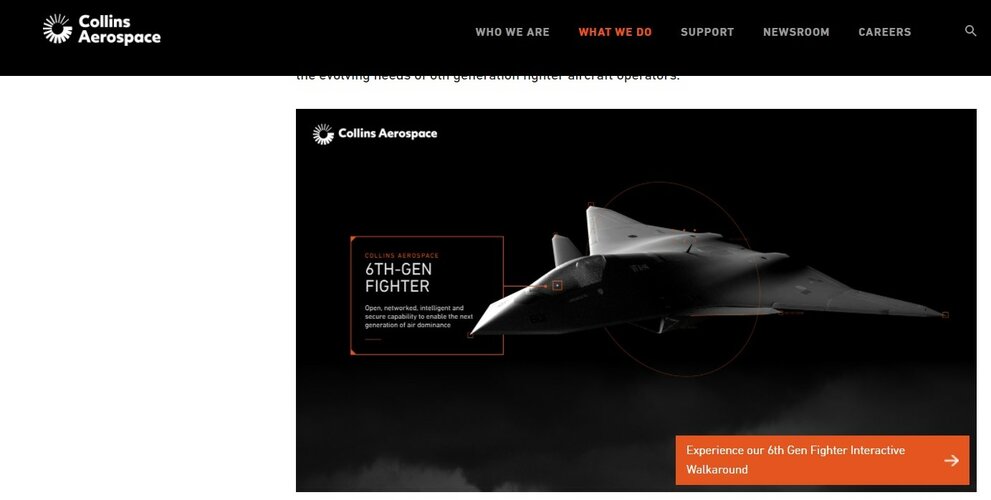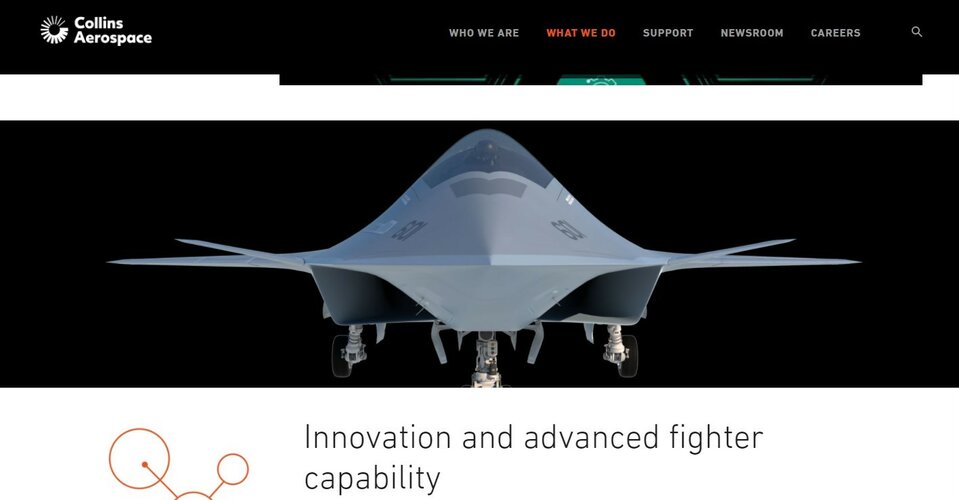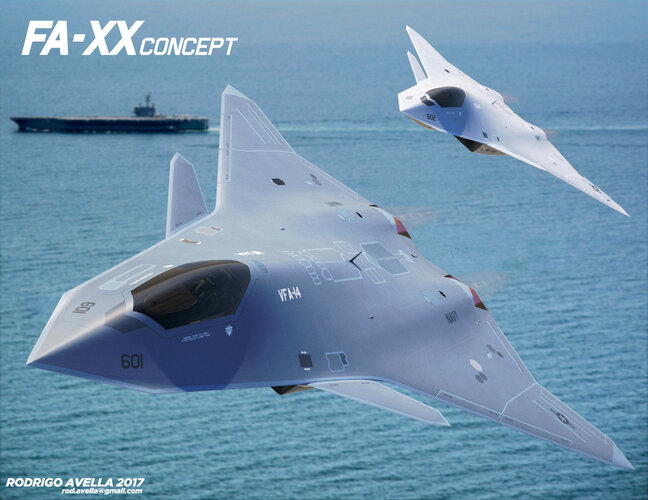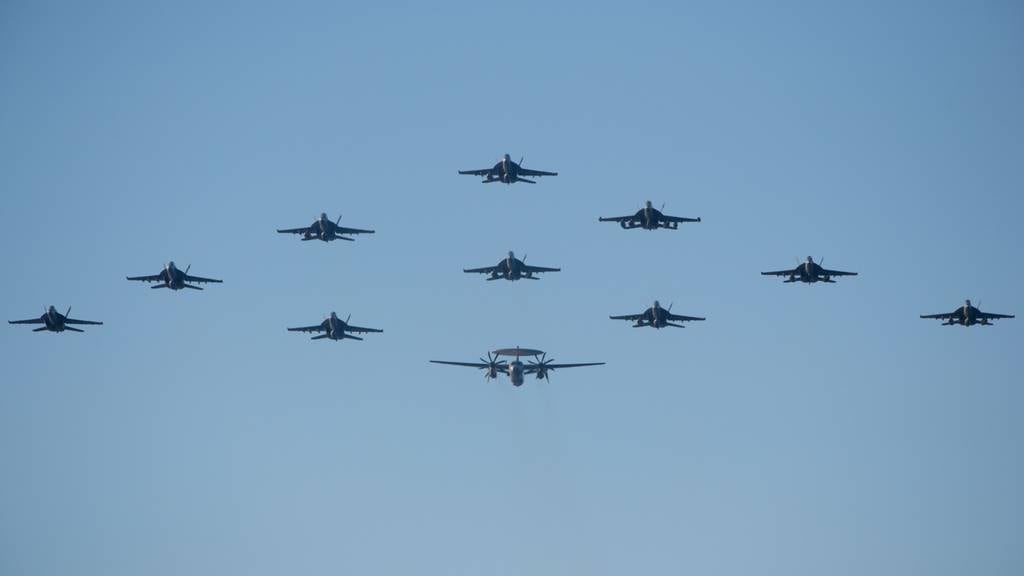Another tidbit of info found on the internet (via DreamlandResort.com):
Next-Generation, Power-Electronics Materials for Naval Aviation Applications
Description:
TECHNOLOGY AREA(S): Materials, Electronics, Weapons
OBJECTIVE: Develop wide-band gap (WBG) electronic material systems for naval aviation applications.
DESCRIPTION: The energy optimized aircraft (EOA) technology concept is continually evolving and being recognized as a game-changer for war fighting capabilities. The main objective of EOA is to systematically replace on-board hydraulic and pneumatic systems with electrical systems to power flight controls, landing gear, and engines starts. The key feature of EOA includes a switch from AC (alternating current) to DC (direct current) power distribution to allow exchanges of energy between equipment, which minimizes electromagnetic interferences (EMI) and energy dissipation, and allows regeneration of air-powered electrical power systems (EPS). Power electronics is the discipline that deals with electrical power generation, distribution and energy storage by conversion, control, and management of electrical power. However, the power conversion forms for electrical power categories (i.e., generation, transmission, and use/storage) differ significantly. For example, the main AC power must be converted to DC power for electronic devices; circuits require DC-DC conversion from one voltage level to another; and DC power from renewable energies (i.e., batteries, solar cells, and fuel cells) can be converted to AC electrical power. Power electronics is a key enabling technology for the advancement of EOA to improve both generator (mechanical to electrical) and actuator (electrical to mechanical) energy conversion and includes novel materials capable of withstanding high temperature and high-power density with reduced weight used in Navy-unique, harsh environmental conditions including EMI. With Next Generation Air Dominance (NGAD) on the horizon, it is important to realize the full potential of power electronics to achieve high power and volume density, high efficiency, reliability, and affordability. A wide band gap (WBG) system would have a positive impact on the next-generation aircraft platform by combining secondary power distribution with emerging power electronics. The current distribution system is made up of bulky, low-efficiency, mechanical-based circuit breakers, contactors, and control systems. Replacing such components with power electronics transforms inefficient systems into simple and intelligent power solutions. With diagnostic and prognostic capabilities, power distribution becomes compact and efficient, which results in significant cost, energy, fuel, and weight savings. Thus, modernization of Navy aircraft is enabled though the application of a WBG system. Switch-mode power circuits (i.e., the electronic circuits utilizing switching frequencies) use two types of semiconductor-based switches: two-terminal rectifiers (diodes) and three-terminal switches (transistors). These switches include inherent material properties, such as electron mobility and thermal conductivity [Ref 1], which result in salient features such as the following: (1) high blocking/breakdown voltage [1-10 kilo Volt]; (2) low loss (conversion efficiency of 99%); (3) large current-carrying capacity (kilo Ampere range); (4) high operational frequency (i.e., 1-100 gigahertz]); (5) high-temperature tolerance (i.e., 300 deg C); and (6) low specific ON-contact resistance [~ 0.01 milliohm cm2]. [Ref 2] These devices are silicon (Si)-based and have several advantages and disadvantages. Advantages include that they operate efficiently, are mass produced, are affordable and reliable, and are used in low-power and low-voltage applications. Disadvantages include that the devices have ohmic losses and generate more heat at higher switching frequencies, which necessitate a complex thermal management solution with a limited operating temperate range. The failure rates of the devices double for every 10 deg C increase in temperature. In short, the limits of the physical properties of Si-based devices are fast approaching, which are hindering further progress. Currently naval electronic applications with Si-based devices operate up to 125 deg C. As the demand for high-voltage devices for switching applications increases, a need exists for materials with much higher breakdown fields. Silicon Carbide (SiC), gallium Nitride (GaN), and gallium arsenide (GaAs) materials within electronics have band-gaps up to 3X higher than that of 1.12 electron volts, and hence WBG materials are the choice for next-generation power electronics. WBG devices can operate at a voltage 10 times higher than Si-based power devices because of their higher maximum electric fields and operating temperatures well over 350 deg C. The higher-temperature operation eliminates the need for complex thermal management solutions such as heat sinks and cooling media. WBG systems have the ability to switch at higher frequencies, enabling equipment to drastically reduce in space, weight, and cost. A high-voltage system has the potential to use lightweight materials, resulting in weight savings for the wires and overall aircraft. WBG systems eliminate up to 90% of power losses currently occurring in the energy conversion process and impart huge energy benefits. Challenges associated with the WBG systems include: (1) the hurdles in crystal growth, both from wafer size (6 inches or more) and drastically-reduced, defect densities (i.e., 5000/cm2), need to be overcome; (2) the devices need to exhibit higher power density (i.e., 3MW/m3) to be more efficient (> 98%) and must be affordable (up to 10X reduction from the current price of $1,000/mm2); (3) the processing temperature for SiC (> 2000deg C) compared to Si is high, which requires innovation in synthesis and processing of these classes of materials; and (4) the yield for WBG materials is much lower than Si, resulting in a high market price. Other remaining challenges include identifying substrate materials, epitaxial film growth, and the back-end process of solving interface, interconnect, and package issues towards successful device development and integration. The reliability and durability (i.e., mean-time-between-failure of 2,000 hours) of the devices to meet various MIL-STD specifications for electrical power quality, environmental control, and EMI are major hurdles to overcome [Refs 3-5].
PHASE I: Establish the structure-property relationship for WBG systems (i.e., SiC, GaN, and GaAs). For instance, demonstrate feasibility of improved wafer quality (up to 8 inches) by reducing the dislocation defect density with salient device features. Apply modeling and simulation tools as necessary. The Phase I effort will include prototype plans to be developed under Phase II.
PHASE II: Based upon Phase I results, fully develop the technology into a prototype and demonstrate on an electrical power system application.
PHASE III: Fully develop the airworthy product with performance specifications satisfying targeted acquisition requirements (e.g., F/A-18, MQ-8B, and H-60) coordinated with Navy technical point of contacts. Improve the technology readiness level/manufacturing readiness level (TRL/MRL) of the electrical power system component and transition to platform (F/A-18, MQ-8B, and H-60). For such a representative aircraft EPS, demonstrate the positive SWaP-C (space, weight, and power - cooling) benefits of the relevant showing compactness, high electrical and thermal efficiencies, and miniaturization leading to a next-generation power generation system architecture for EOA. Demonstrate hardware with in-the-loop testing, along with the electrical load analysis of EPS, as an integral part of this effort. The effort will result in developing compact, miniature electronic products that will benefit automobile and consumer electronic market sectors.
REFERENCES:
1: Wide Bandgap Power Electronics Technology Assessment,
https://energy.gov/sites/prod/files/2015/02/f19/QTR Ch8 - Wide Bandgap TA Feb-13-2015.pdf
2: Tolbert, L. M., Ozpineci, B., Islam, S. K., and Chinthavali, M. "Wide Bandgap Semiconductors for Utility Applications." IASTED International Conference on Power and Energy Systems (PES 2003), (Palm Springs, CA), page 315 and references therein.
http://web.eecs.utk.edu/~tolbert/publications/iasted_2003_wide_bandgap.pdf
3: MIL-STD-810G(1) – Department of Defense Test Method Standard: Environmental Engineering Considerations Laboratory Tests (15 Apr 2014).
http://quicksearch.dla.mil/qsDocDetails.aspx?ident_number=35978
4: MIL-STD-461G – Department of Defense Interface Standard: Requirements for the Control of Electromagnetic Interference Characteristics of Subsystems and Equipment (11 Dec 2015).
http://quicksearch.dla.mil/qsDocDetails.aspx?ident_number=35789
5: MIL-STD-704F(1) – Department of Defense Aircraft Electrical Power Characteristics (05 Dec 2016).
http://quicksearch.dla.mil/qsDocDetails.aspx?ident_number=35901
KEYWORDS: Power Electronics Materials; Wide-band Gap Systems; Wafers; Power Electronic Equipment; Aircraft Applications; Affordable Cost

www.sbir.gov






